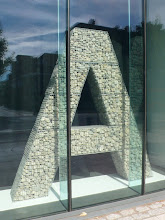
Fifteen developmental variations were produced, of which six are illustrated here. Placing the coloured block that signifies the type of landscape into the space of the page that contains the block of text, makes links between the visual language of the map and the written language of the book. It also alludes to the idea of ‘landscape as text’, yet executed in this way the blocks communicate little about the nature of the space.

Some of the versions allude to a journey either by using street and place names, or by the use of a dotted line, the colour of which references that which is used by the Ordnance Survey maps to denote a footpath. Some contain ‘borders’ that define the beginning and end of the story, or the edges of the space. One contains a number of photographs in place of the map-like visual language, which enables this version to offer more of a ‘peopled’ sense of place. Later versions also explore how the use of a map might change the use of a book, with text blocks rotated to imply the way a map is often turned round to pinpoint how the map relates to one’s own position within place.




This project may at first glance seem nothing more than an abstract experiment, however, this is primarily because at the point of undertaking, I had not generated any ethnographic content about Hackney with which to drive the process or even ‘fill’ the pages. Once the cultural probes and my own observations begin to provide this content, it may be worth revisiting some aspects of this work either through the project as it is, or within the context of the Place as Book project.


No comments:
Post a Comment